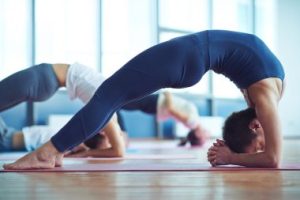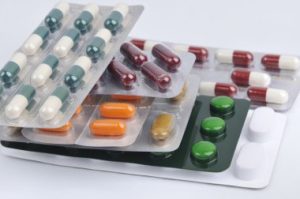
Can You Exercise When On Antibiotics (4 Helpful Guidelines)
Can you exercise when on antibiotics? This common question arises for many individuals undergoing antibiotic treatment, as the intersection of health practices becomes a concern. Understanding the relationship between antibiotics and exercise is crucial for maintaining overall well-being during recovery.
Embarking on a fitness journey is often an exhilarating endeavor, fueled by the desire to sculpt a healthier version of oneself. However, life sometimes throws unexpected curveballs, and finding yourself on a course of antibiotics can feel like a detour in your fitness roadmap.
The burning question arises: Can you exercise when on antibiotics? It’s a query that echoes through the minds of fitness enthusiasts like a persistent drumbeat. Fear not, for the intersection of antibiotics and exercise is not a roadblock, but rather a winding path where caution and determination dance a delicate duet. Let’s unravel the mystery, break a sweat, and discover the harmony between healing and the heartbeat of a workout.

Can You Exercise When On Antibiotics
Yes, you can generally exercise while on antibiotics, but it’s crucial to consider individual health, the severity of the infection, and the type of antibiotics prescribed.
Understanding the Relationship
Antibiotics play a pivotal role in combating bacterial infections, but questions arise about their compatibility with exercise routines. Striking a balance between health and physical activity is essential for a holistic approach to well-being.
Factors to Consider
Severity of the Infection
The nature and severity of the infection should guide your decision. Mild illnesses may allow for moderate exercise, but more severe conditions may necessitate rest to facilitate the healing process.
Individual Health
Your overall health and fitness level are critical considerations. Individuals with chronic conditions or weakened immune systems may need to exercise caution and consult with healthcare professionals.
Type of Antibiotics
The specific antibiotic prescribed also influences your ability to exercise. Some medications may cause fatigue or muscle soreness, making intense workouts less advisable.
Listening to Your Body
Balancing antibiotics and exercise requires attentiveness to your body’s signals. If you experience unusual fatigue, dizziness, or increased discomfort, it’s crucial to prioritize rest and consult with your healthcare provider.
Understanding Antibiotics
Definition and purpose
Antibiotics are powerful medications designed to combat bacterial infections within the human body. These drugs work by either killing bacteria or inhibiting their growth, offering a crucial line of defense against various illnesses. The primary purpose of antibiotics is to target and eliminate harmful bacteria, thereby aiding the body’s immune system in overcoming infections.
However, it is essential to understand that antibiotics are ineffective against viral infections, such as the common cold or flu, as they specifically target bacteria. When prescribed antibiotics, it is crucial to follow the prescribed dosage and complete the full course of treatment, even if symptoms improve before completion.
As for exercising while on antibiotics, it is generally considered safe, but individuals should listen to their bodies and avoid strenuous activities if they experience fatigue, weakness, or other adverse effects. It’s advisable to consult with a healthcare professional to ensure that exercise won’t interfere with the antibiotic’s efficacy or exacerbate any underlying health issues.
Common types of antibiotics
Common types of antibiotics include penicillins, cephalosporins, tetracyclines, macrolides, fluoroquinolones, and sulfonamides. Penicillins, such as amoxicillin and ampicillin, are effective against a broad range of bacteria and are commonly prescribed for various infections.
Cephalosporins, like cephalexin, exhibit similar antibacterial properties but are often used for more serious infections. Tetracyclines, like doxycycline, are effective against a wide spectrum of bacteria and are commonly prescribed for respiratory and skin infections. Macrolides, such as azithromycin and erythromycin, are often used for respiratory and soft tissue infections.
Fluoroquinolones, like ciprofloxacin, target bacterial DNA replication and are effective against a variety of bacteria. Sulfonamides, including trimethoprim-sulfamethoxazole, interfere with bacterial folic acid synthesis. While taking antibiotics, it’s crucial to follow medical advice and complete the prescribed course.
As for exercise during antibiotic use, it’s generally safe to engage in physical activity unless explicitly advised otherwise by a healthcare professional. However, it’s essential to listen to your body, stay hydrated, and avoid strenuous workouts if you experience fatigue or other side effects from the medication. Always consult with your doctor for personalized advice based on your specific health condition and the type of antibiotics prescribed.
How antibiotics work in the body
Antibiotics are medications designed to combat bacterial infections by either killing the bacteria or inhibiting their growth. They work within the body by targeting specific components of bacterial cells, such as their cell walls or protein synthesis machinery, disrupting crucial processes essential for bacterial survival. This targeted approach minimizes harm to human cells, as they differ significantly from bacterial cells.
However, it is crucial to complete the entire prescribed course of antibiotics, even if symptoms improve, to ensure the eradication of all bacteria and prevent the development of antibiotic-resistant strains. Regarding exercise while on antibiotics, it generally depends on the specific antibiotic and the individual’s health condition.
Potential side effects of antibiotics
Antibiotics are powerful medications designed to combat bacterial infections, but they can have potential side effects that individuals should be mindful of Common side effects may include gastrointestinal issues such as nausea, diarrhea, or abdominal pain. In some cases, antibiotics may disrupt the balance of beneficial bacteria in the gut, leading to complications like yeast infections.
Additionally, certain antibiotics can cause allergic reactions, ranging from mild skin rashes to more severe symptoms like difficulty breathing. It’s crucial for individuals to be aware of these potential side effects and promptly inform their healthcare provider if they experience any adverse reactions.
Regarding exercise while on antibiotics, it’s generally advisable to consult with a healthcare professional. While mild to moderate exercise may be permissible, strenuous workouts might exacerbate certain side effects or strain the body’s healing process.
Effects of Exercise on the Body
Impact on the immune system
Regular exercise has a profound impact on the body, positively influencing various physiological systems, including the immune system. Engaging in consistent physical activity has been shown to enhance the functioning of the immune system by promoting the circulation of immune cells, improving the body’s ability to combat infections, and reducing inflammation. Moreover, exercise contributes to overall health by promoting better cardiovascular function, maintaining a healthy weight, and regulating blood sugar levels.
Influence on metabolism and energy levels
Regular exercise has a profound impact on metabolism and energy levels, playing a pivotal role in overall health and well-being. Engaging in physical activity increases the metabolic rate, promoting the efficient conversion of nutrients into energy. This heightened metabolic rate persists even after the exercise session, known as the afterburn effect or excess post-exercise oxygen consumption (EPOC).
Regular physical activity also enhances insulin sensitivity, allowing cells to better utilize glucose for energy, thereby preventing the accumulation of excess fat. Additionally, exercise stimulates the production of mitochondria, the powerhouse of cells, further boosting energy production.
Benefits for mental health
Engaging in regular exercise is widely recognized for its numerous benefits for mental health, promoting overall well-being and resilience. Physical activity has been linked to the release of endorphins, the body’s natural mood enhancers, which can help alleviate symptoms of stress, anxiety, and depression. Additionally, exercise improves cognitive function, enhances self-esteem, and fosters better sleep patterns—all of which contribute to a healthier mental state.
Considerations for different types of exercise (aerobic, strength training, flexibility)
Considerations for different types of exercise, including aerobic, strength training, and flexibility, are crucial for designing a well-rounded fitness routine. Aerobic exercises, such as running or cycling, enhance cardiovascular health and endurance, requiring sustained effort over a period.
Strength training, involving resistance exercises, helps build muscle mass and improve overall strength. Flexibility exercises, such as yoga or stretching, promote joint mobility and reduce the risk of injuries. When it comes to exercising while on antibiotics, it’s important to consult with a healthcare professional. In some cases, moderate exercise may be acceptable, but certain antibiotics may cause fatigue or affect muscle function.

Can You Exercise While on Antibiotics
General guidelines
Engaging in physical activity while on antibiotics requires careful consideration, as it depends on the severity of the infection and the specific antibiotics prescribed. For individuals with mild to moderate infections, light exercise may be acceptable. Severe infections, on the other hand, often necessitate rest and recovery, with exercise being contraindicated during the acute phase.
Furthermore, certain antibiotics may have side effects, such as dizziness or fatigue, which can impact your ability to exercise safely. It is essential to consult with your healthcare provider before incorporating any physical activity into your routine while on antibiotics, as they can provide personalized advice based on your health condition and the specific medications prescribed.
Listening to your body
Listening to your body is essential, especially when it comes to making decisions about exercise while on antibiotics. Antibiotics are prescribed to combat bacterial infections, and they can affect your body in various ways. It’s crucial to pay attention to any signs of fatigue, weakness, or discomfort.
While mild exercise may be beneficial for maintaining overall well-being, intense workouts can strain your immune system, potentially hindering the healing process. Prioritizing rest and allowing your body to recover is often the wisest choice during this time, as it ensures that your immune system can focus on fighting the infection without unnecessary stress. Always listen to your body’s signals, and remember that rest is an integral part of the healing journey.
Adjusting the intensity and duration of exercise
Adjusting the intensity and duration of exercise is crucial for individuals who are on antibiotics. While exercise is generally beneficial for overall health, it’s important to recognize that certain antibiotics may impact one’s energy levels, muscle function, and recovery. When under antibiotic treatment, individuals may experience fatigue, weakness, or even muscle soreness as potential side effects.
In such cases, it becomes imperative to modify the intensity and duration of exercise to accommodate the body’s reduced capacity. Opting for lower-intensity activities like brisk walking, gentle stretching, or yoga can help maintain some level of physical activity without overtaxing the body’s resources. Additionally, it’s advisable to listen to the body’s signals and prioritize rest when needed.

Hydration and nutrition during antibiotic use
Hydration and nutrition play crucial roles in supporting the body’s immune system, especially during antibiotic use. Antibiotics are essential for combating bacterial infections, but they can also affect the body’s balance of beneficial bacteria. Staying well-hydrated is essential to help flush out toxins and support overall bodily functions. Additionally, maintaining a nutritious diet rich in vitamins, minerals, and probiotics can aid in replenishing the gut flora disrupted by antibiotics. However, it’s important to note that certain antibiotics may interact with specific foods or beverages, so it’s advisable to consult with a healthcare professional or pharmacist for personalized guidance.
Precautions and Concerns
Potential interactions between antibiotics and exercise
When considering the intersection of antibiotics and exercise, it’s crucial to acknowledge potential interactions and exercise with caution. Antibiotics, while instrumental in combating bacterial infections, may bring about side effects that could affect one’s physical well-being. Some antibiotics may cause dizziness, fatigue, or muscle weakness, compromising the ability to exercise safely.
Additionally, certain medications may amplify the risk of tendon injuries, making high-impact activities more precarious. However, not all antibiotics pose such concerns, and some individuals may continue their exercise routines with modifications. Nonetheless, prioritizing rest, staying hydrated, and paying close attention to one’s body signals are essential precautions during this period to ensure a balance between recovery and maintaining overall health. Always seek personalized medical advice to navigate these considerations effectively.
Risk of overexertion and weakened immune response
Engaging in physical activity while taking antibiotics carries potential risks, primarily centered around the dangers of overexertion and a compromised immune response. Antibiotics are medications designed to combat bacterial infections, and during their course, the body may be in a weakened state as it fights off the invading pathogens.
Intense exercise places additional stress on the immune system and the body as a whole. Overexertion can lead to fatigue, muscle strain, and prolonged recovery times, which may hinder the body’s ability to effectively respond to the infection. Moreover, antibiotics can sometimes cause side effects such as dizziness or gastrointestinal discomfort, making strenuous physical activity potentially hazardous.
Monitoring for side effects
Monitoring for side effects is crucial when taking antibiotics, as these medications can sometimes lead to adverse reactions. It is essential to be vigilant about any unusual symptoms or changes in your body while on a course of antibiotics. Common side effects may include gastrointestinal issues, such as nausea or diarrhea, and allergic reactions like skin rashes.
It’s recommended to listen to your body and avoid strenuous activities if you’re experiencing severe side effects or feel unwell. Always consult with your healthcare professional for personalized advice regarding your specific condition and antibiotic treatment.
Specific Antibiotic Classes and Exercise Recommendations
Penicillins
Penicillins are a widely used class of antibiotics that effectively combat bacterial infections by inhibiting the synthesis of bacterial cell walls. When undergoing a course of penicillin treatment, it is generally safe to engage in regular exercise. However, individual responses to antibiotics may vary, and it’s crucial to consider factors such as the severity of the infection, overall health, and any potential side effects.
While penicillins are not known to have specific interactions with exercise, it is advisable to listen to your body and adjust your workout intensity accordingly. If an infection has caused fatigue or other symptoms, it may be prudent to opt for lighter exercises or rest until the body has fully recovered.
Macrolides
Macrolides are a class of antibiotics commonly prescribed to treat bacterial infections, such as respiratory tract infections and skin infections. While these antibiotics are generally well-tolerated, it is essential to consider certain factors when combining them with exercise. Engaging in physical activity while on macrolides may be influenced by individual reactions and the specific symptoms being treated.
Taking into account the severity of one’s infection and any potential side effects, In some cases, macrolides may cause mild dizziness or fatigue, and it is advisable to modify exercise intensity accordingly. Overall, maintaining open communication with healthcare professionals is crucial to determine appropriate exercise recommendations during antibiotic treatment, ensuring a balance between promoting recovery and avoiding unnecessary strain on the body.
Fluoroquinolones
Fluoroquinolones are a specific class of antibiotics commonly prescribed to treat various bacterial infections. While these antibiotics are effective in combating bacterial illnesses, it is essential to consider their potential impact on tendons and connective tissues. Fluoroquinolones have been associated with an increased risk of tendonitis and tendon rupture, particularly in weight-bearing joints.
Therefore, caution is advised when engaging in strenuous physical activities, such as intense exercise or heavy weightlifting, while undergoing fluoroquinolone treatment. In cases where fluoroquinolones are prescribed, a healthcare provider may suggest modifying exercise routines to avoid excessive strain on joints and tendons. Ultimately, the key is to strike a balance between maintaining an active lifestyle and ensuring the safety and effectiveness of the antibiotic treatment.
Sulfonamides
Sulfonamides are a class of antibiotics that are commonly prescribed to treat various bacterial infections. When it comes to exercising while on sulfonamides or any antibiotics, it’s essential to consider individual factors and the nature of the infection being treated.
In general, moderate exercise is usually acceptable, but it’s crucial to listen to your body and avoid strenuous activities if you’re experiencing fatigue, weakness, or other side effects of the medication. Some antibiotics may cause dizziness or nausea, making vigorous exercise ill-advised during the course of treatment. Additionally, certain infections may require more rest and recovery, and engaging in intense physical activity could hinder the healing process.
Tetracyclines
Tetracyclines are a class of antibiotics commonly prescribed to combat a variety of bacterial infections. These antibiotics work by inhibiting protein synthesis in bacteria, thereby impeding their growth and reproduction. When it comes to exercise recommendations while taking tetracyclines, it is generally advisable to exercise caution.
While moderate exercise is usually well-tolerated, some individuals may experience increased sensitivity to sunlight as a side effect of tetracycline antibiotics. Given that tetracyclines can make the skin more susceptible to sunburn, it is essential for individuals to protect themselves from prolonged sun exposure during outdoor activities.
Additionally, strenuous exercise may exacerbate certain side effects such as gastrointestinal upset or dizziness. Therefore, it is advisable to consult with a healthcare professional to determine an appropriate exercise routine based on individual health status and the specific antibiotic regimen.
Cephalosporins
Cephalosporins are a class of antibiotics commonly prescribed to combat bacterial infections. While the use of antibiotics is crucial for treating infections, including those targeted by cephalosporins, it’s essential to consider certain factors when it comes to exercise. Generally, engaging in physical activity is considered safe while taking cephalosporins.
Additionally, factors such as the severity of the infection, overall health, and specific side effects of the antibiotic should be taken into account. Staying hydrated and monitoring one’s body for any adverse effects, such as dizziness or fatigue, is crucial. Ultimately, a personalized approach, guided by medical advice, ensures a balanced and safe integration of exercise with cephalosporin treatment.

Case-by-Case Considerations
Individual health conditions
When contemplating the possibility of exercising while on antibiotics, it is imperative to approach the decision with a case-by-case consideration, taking into account individual health conditions. Antibiotics are prescribed to treat bacterial infections, and their potential side effects can vary widely among individuals. Some antibiotics may cause fatigue, dizziness, or gastrointestinal distress, making rigorous exercise ill-advised during the course of treatment.
However, in certain cases where the antibiotic side effects are mild and the individual’s overall health permits, moderate exercise might be permissible. It is crucial to consult with a healthcare professional to assess the specific antibiotic prescribed, the nature of the infection being treated, and the individual’s overall health status before engaging in any physical activity during antibiotic treatment.
Age considerations
Age consideration is crucial when determining the appropriateness of exercising while on antibiotics. While many adults may be able to engage in moderate physical activity without significant issues, the impact can vary among age groups. Children and elderly individuals may have different tolerance levels and susceptibilities to the side effects of both antibiotics and exercise.
The interaction between antibiotics and exercise can vary based on the specific medication, the individual’s health status, and the nature of the exercise routine. Consulting with a healthcare provider ensures a personalized and informed decision that takes into account age-related factors and promotes overall well-being.

Duration of antibiotic treatment
The duration of antibiotic treatment varies depending on the type of infection, the specific antibiotic prescribed, and the individual’s response to the medication. It is crucial for patients to follow their healthcare provider’s instructions regarding the full course of antibiotics, even if symptoms improve before completion.
Incomplete antibiotic courses may contribute to antibiotic resistance and the recurrence of infections. While undergoing antibiotic treatment, individuals often wonder if they can engage in physical exercise. In general, moderate exercise is usually acceptable while on antibiotics. However, it is essential to listen to one’s body and avoid strenuous activities if feeling fatigued or experiencing side effects.
Specific exercise modifications based on health status
Exercise modifications based on health status are crucial to ensure the safety and well-being of individuals, especially when dealing with health conditions or medications like antibiotics. When on antibiotics, it’s essential to consider the potential side effects and how they might impact your ability to engage in physical activity.
Antibiotics can sometimes cause fatigue, dizziness, or gastrointestinal issues, making intense or strenuous exercise less advisable during this period. Modifications may involve opting for low-impact activities such as walking or gentle yoga, adjusting the intensity and duration of workouts, and paying close attention to how the body responds. Always prioritize health and safety when incorporating exercise into any treatment plan.
Post-Antibiotic Recovery
Reintroduction of exercise after completing the antibiotic course
Post-Antibiotic Recovery marks a crucial phase in restoring one’s overall health and well-being after completing a course of antibiotics. While antibiotics play a vital role in combating bacterial infections, they can also disrupt the delicate balance of the body’s microbiome. Following the completion of antibiotic treatment, individuals often experience a period of recovery during which they aim to replenish and nurture their gut flora.
Incorporating exercise into this recovery process is a beneficial step. Exercise has been shown to support the immune system, enhance mood, and contribute to overall physical health. However, it’s important to approach post-antibiotic exercise with caution. Striking a balance between promoting recovery and engaging in suitable physical activity can significantly contribute to the restoration of one’s health post-antibiotic treatment.
Gradual progression and reevaluation of fitness goals
Gradual progression and reevaluation of fitness goals are essential components of a sustainable and effective fitness journey. Instead of pursuing rapid, drastic changes, individuals benefit from steadily increasing the intensity, duration, and complexity of their workouts over time. This approach not only minimizes the risk of injuries but also allows the body to adapt progressively, fostering long-term improvements in strength, endurance, and overall well-being.
Regularly reassessing fitness goals is equally important, as it enables individuals to adjust their objectives based on evolving priorities, changing circumstances, or newly discovered capabilities. By embracing a flexible and adaptive mindset, individuals can maintain motivation, sustain progress, and tailor their fitness routines to suit their ever-changing needs.
Monitoring for lingering side effects
Monitoring for lingering side effects is crucial when taking antibiotics, as these medications can have various impacts on the body. While antibiotics are designed to target and eliminate bacterial infections, they may also affect other bodily functions, potentially leading to side effects. It is essential to be vigilant and observant for any lingering symptoms or adverse reactions even after completing a course of antibiotics.
Common side effects may include gastrointestinal issues, allergic reactions, or changes in skin appearance. Additionally, individuals are advised to consult with their healthcare providers if they experience persistent symptoms or new health concerns after antibiotic use. It’s essential to prioritize open communication with medical professionals to ensure thorough monitoring and prompt intervention if needed. In some cases, exercise may be permissible, but individual circumstances and the specific antibiotic regimen should be taken into consideration to avoid potential complications.
Frequently Asked Questions (FAQ) about Can You Exercise When On Antibiotics
Q1. Can I exercise while taking antibiotics?
A. Yes, in most cases, mild to moderate exercise is generally safe while on antibiotics. However, it’s crucial to listen to your body and avoid strenuous activities if you’re feeling fatigued.
Q2. Are there specific types of exercise I should avoid during antibiotic treatment?
A. High-intensity workouts, heavy weightlifting, and strenuous activities that may further compromise your immune system should be avoided. Opt for low-impact exercises like walking or gentle yoga.
Q3. Will exercising affect the effectiveness of antibiotics?
A. Exercise itself is unlikely to impact the efficacy of antibiotics. However, it’s essential to follow your healthcare provider’s advice and complete the full course of antibiotics for optimal recovery.
Q4. Can exercising help speed up recovery while on antibiotics?
A. While exercise can boost overall well-being, there’s no conclusive evidence that it accelerates the antibiotic healing process. Rest is often equally important during the recovery period.
Q5. Should I inform my fitness trainer about being on antibiotics?
A. Yes, it’s advisable to inform your trainer about your antibiotic use. They can adjust your workout routine to accommodate your current health status and ensure your safety during sessions.
Q6. Are there any signs I should watch for while exercising on antibiotics?
A. Pay attention to your body. If you experience increased fatigue, dizziness, or any unusual symptoms, stop exercising and consult your healthcare provider.
Q7. Can antibiotics cause muscle soreness or affect my performance during exercise?
A. While muscle soreness is not a direct side effect of antibiotics, they can cause fatigue. Adjust your exercise intensity accordingly and be mindful of any changes in your performance.
Q8. Is it safe to participate in group fitness classes or team sports while on antibiotics?
A. Participating in group activities is generally safe, but be cautious about potential exposure to infections from others. Hygiene practices, such as regular handwashing, become even more critical during this time.
Q9. Should I stay hydrated differently while on antibiotics and exercising?
A. Staying well-hydrated is crucial, especially when on antibiotics. Ensure you drink enough water to compensate for any fluid loss during exercise and to support the healing process.
Q10. Can I take over-the-counter pain relievers for exercise-related discomfort while on antibiotics?
A. Check with your healthcare provider before taking any additional medications. Some pain relievers may interact with antibiotics, and your doctor can provide guidance on the best approach to manage discomfort.
Conclusion
In conclusion, the decision to exercise while on antibiotics should be approached with caution and consideration of individual circumstances. While mild to moderate physical activity may generally be acceptable, it is crucial to consult with a healthcare professional before engaging in any strenuous or intense workouts. Antibiotics can affect the body’s ability to recover and may amplify certain side effects, such as fatigue and muscle soreness.
Prioritizing rest and allowing the body to focus on healing is paramount during antibiotic treatment. Always adhere to the guidance provided by healthcare professionals, who can offer personalized advice based on the specific antibiotic regimen and individual health conditions. Ultimately, striking a balance between maintaining a healthy lifestyle and respecting the body’s need for recovery is key when navigating the intersection of exercise and antibiotic use.